Photos of the Old Wild West You Won’t Believe Exist!
The outside world

1. Goldie Griffith
The Wild West was a challenging time to be alive. Living in the Frontier during the 19th century meant saloons, cowboys, Native Americans, gunfights and lots of mustaches. There was a lot of brawling going on, but also a lot of traveling and new discoveries happening. Without this time, our world wouldn’t be what it is today! Here are some amazing photographs that define this time period:
Put ’em up, cowgirl! Ms. Griffith was a part of Buffalo Bill’s Wild West Show, but she wasn’t there to look pretty! Goldie Griffith was known for her mean abilities as a boxer and wrestler, she also rode broncos and performed various other acts.

Buffalo Bill Museum & Grave
Griffith became a star in her own right, even getting married at Madison Square Garden! She famously rode her horse up the steps of Ulysses S. Grant’s tomb in New York City and was known as “the gol darndest gal who ever sat leather.” On a bet, she rode her horse over 3,000 miles from San Francisco to New York.
We all want to be as tough as Goldie! Keep reading to see more fascinating figures from the Old West.
2. Texas Jack Vermillion
John Wilson Vermillion, also known as Texas Jack, is one of the legendary gunfighters of the Old West who was known for working with the Earps in their vendetta rides searching for outlawed cowboys. He was also known by the name “Shoot-Your-Eye-Out Vermillion” because it was rumored that he once shot a man in the eye.

Ranker
Texas Jack is called as such because that’s how they listed him on all of his wanted posters, which he was on for shooting a man during an argument at cards. Yikes! Someone once asked him why he was called Texas Jack and replied, “because I’m from Virginia.” Well, that explains a lot!
3. Jesse James
Jesse James is a notorious American outlaw, but his talents didn’t end there! He was also a guerrilla fighter, a gang leader, bank and train robber and, of course, a murderer. James was born in Missouri and, together with his brother, the two formed the James-Younger Gang. That’s one strong sibling bond!

Ranker
They were Confederate bushwhackers during the Civil War and were ultimately accused of committing multiple monstrosities against Union soldiers during the war, including their many infamous robberies.
4. Olive Oatman
Olive Oatman was only 14 years-old when her family was attacked and killed by a group of Native Americans. The Oatmans were traveling through present-day Arizona at the time. Olive and her sister were kidnapped and sold to the Mohave people. Her sister died of starvation while in captivity.

ABC
Olive is best recognized by her blue face tattoo which she believed was a sign of slavery in the Mohave tribe where she was kept, but that is inconsistent with tribal traditions. According to the Mohave tradition, all members of the tribe receive face tattoos. Her story was widely publicized but few details are known about her time with the Mohave.
5. Santiago ‘Jimmy’ McKinn
Santiago ‘Jimmy’ McKinn was a boy by the age of 11 or 12, who lived with his family in the lower Mimbres Valley, New Mexico. One day, while out with his older brother Martin, a group of Chiricahua Apache led by Geronimo approached the two. The Apache then killed Martin and abducted young Santiago.
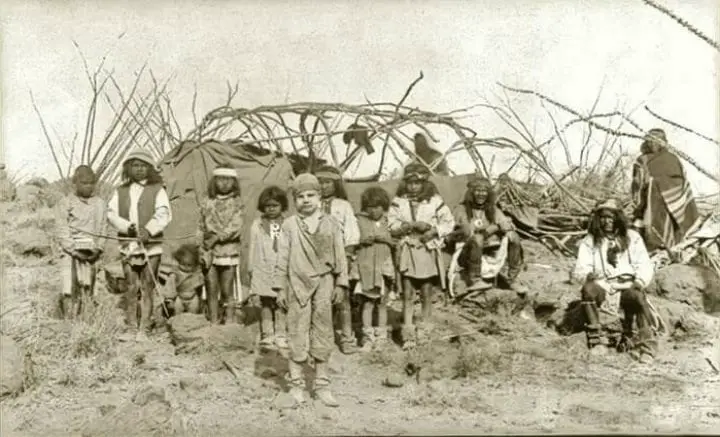
Pinterest
As the story goes, Santiago was eventually rescued by General George Crook, but the boy did not want to go back to his family and preferred to stay with the Apache. The above photo depicts young Santiago McKinn along with his captors, with whom he lived for six months, taking up their language and lifestyle.
6. Annie Oakley
Annie Oakley is probably one of the most well known faces of the Wild West. Born Phoebe Ann Mosey, Oakley rose to fame at the early age of 15 due to her outstanding sharpshooting skills. She began trapping, shooting and hunting by the age eight, to support her poor family after the death of her father.
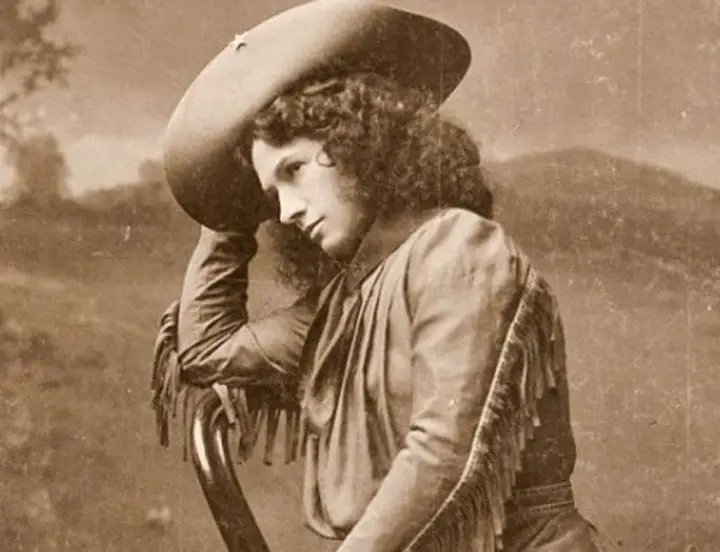
True West Magazine
After making a name for herself as a trained shooter, young Annie married fellow marksman and former rival Frank E. Butler. The two later joined Buffalo Bill’s Wild West show, turning Oakley into an international star.
7. Buffalo Bill’s Wild West Show
Buffalo Bill has a “wild” reputation throughout the Old West, and has been one of the most influential showmen ever! Bill was a scout and a bison hunter, but when he wasn’t out in the wild, he was working his show! Don’t you want a ticket?

Ranker
The Wild West Shows were a series of traveling shows that romanticized life in the American Frontier. They performed variety acts, including reenacting the incident of Warbonnet Creek, a parade, and many other circus-like acts. There was something for everyone!
8. Rose Dunn
This next Wild West woman is something of a western legend. Rose Dunn, also known as Rose of the Cimarron, was romantically involved with outlaw George “Bittercreek” Newcomb around the age of 14 or 15. Newcomb’s gang adored Dunn for her good looks and cool demeanor. After a shoot-out with US Marshals, the gang went into hiding.
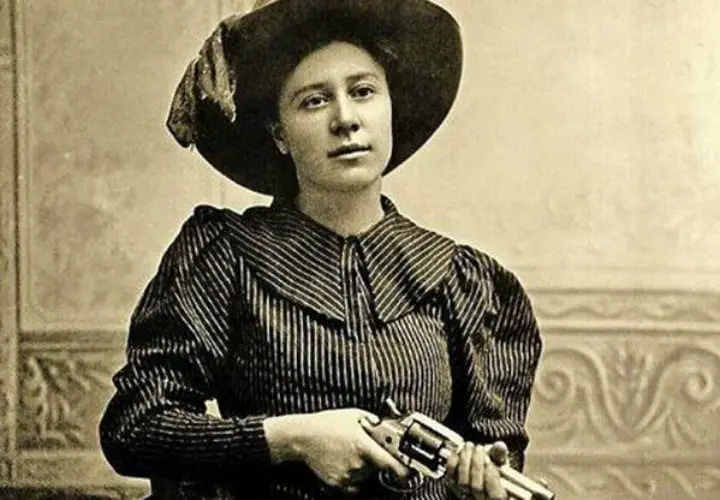
Prairie Rise Publications
Newcomb and another gang member eventually returned to visit Rose and her brothers shot them on site. The Dunn’s collected a $5,000 bounty for Newcomb. He was wanted “Dead or Alive.” Legend says that Dunn set him up, but we may never know the true story.
9. Discretion is Advised
Brothels and outlaws usually go well together, and Fannie Porter’s brothel was no exception. Ex-prostitute porter was respected among criminals for her warm and sincere attitude, as well as her discretion. She was known for refusing to turn in her costumers, and was popular among members of the Wild Bunch gang for this reason.
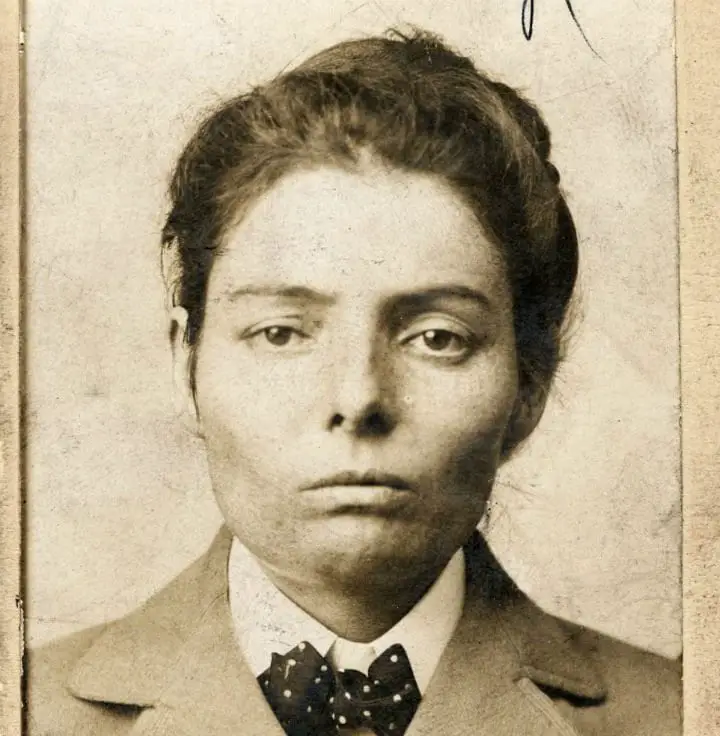
theultramodernist.com
Among the San Antonio brothel’s frequent clients were Butch Cassidy and Kid Curry, the Sundance Kid and other members of the gang. What’s more, a number of Porter’s “girls” became involved with the gang members. Wild Bunch member, Laura Bullion (pictured above), is even said to have worked at the brothel for a time.
10. Gun Toting Women
We’ve all heard of Billy the Kid, Butch Cassidy, The Sundance Kid and Jesse James, but did you know there were quite a few female gunslingers and outlaws back in the old Wild West? Big Nose Kate, for example, wasn’t just famed outlaw Doc Holliday’s wife, she was also said to have helped him escape from jail by setting it on fire.
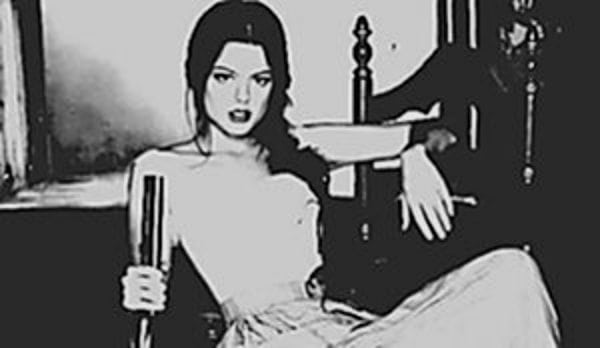
Pinterest
Calamity Jane was another gun-toting western figure. She was a part time prostitute, wore mens’ clothes, and performed in wild west shows. More legendary gunslingers were the skillful shooter Pearl Hart, 15-year-old sharpshooter Lillian Smith and “Stagecoach Mary” AKA Mary Fields, an emancipated slave that wasn’t afraid to start a fight, to say the least.
11. Women in the Gold Rush
The California Gold Rush that began in 1848 attracted many men and women from all over the world to work in the gold fields. At first, the growing population had very few women in it, creating plenty of opportunities for women that were in the area, and thus attracting more to emigrate to California.

Pinterest
These women took part in the search and pan for gold together with their husbands and families, or they would arrive on their own in search for wealth. Besides gold panning, other popular occupations were housekeeping, cooking, washing clothes, acting and dancing.
12. Members of Buffalo Bill’s troupe
These charming men gathered around a log cabin are several members of Buffalo Bill’s troupe. These are some of the people that would likely travel all over the world performing for people who wanted to get a glimpse of the Wild West! Lucky for us, we can catch a glimpse of it on here.

Buffalo Bill Image Archive
In this photograph, we have a John Nelson, John Burke, a Sioux Native American, and several other stern cowboys.
13. Charley Nebo and a Friend
Charley Nebo, pictured left, was born in 1842 to an English father and Canadian mother. He was a well known cowboy that lived in New Mexico, Texas and Nebraska. Nebo served in the Union Army during the civil war, and suffered a painful injury that left him handicapped. He ended up being honorably discharged, and eventually became a stockman.
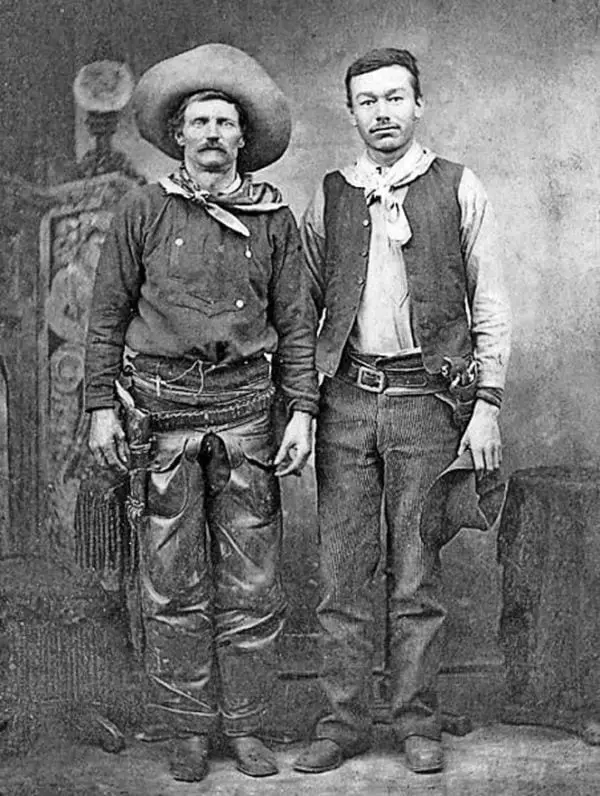
Boredom Therapy
In 1878, Nebo started working for John Chisum’s cattle empire. He was also friends with renowned robber, Billie the Kid, and was known to be a skilled cowboy, that left a lasting impression on the old Wild West.
14. Having a Drink
Being a cowboy wasn’t always hard work on horseback at the ranch. In the photo below, a group of cowboys is seen enjoying a drink and a quick chat with the bartender at a saloon in Old Tasacosa, Northern Texas ca. 1907.
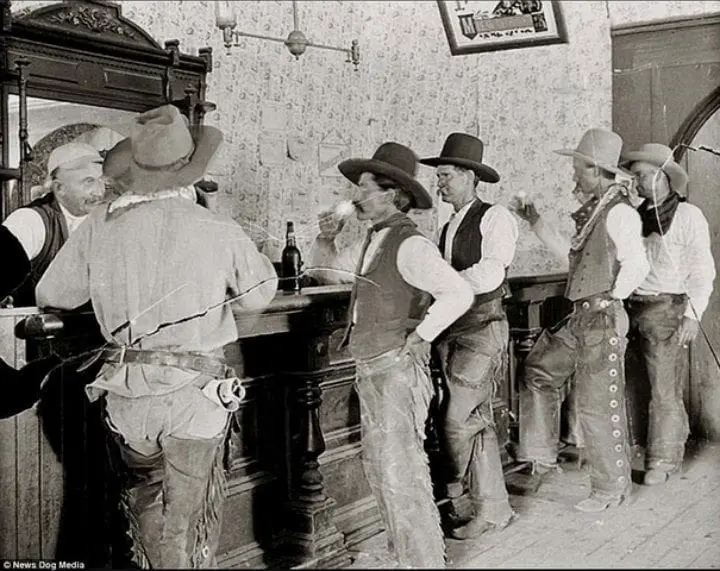
Daily Mail
The saloon was a place to rest, have a drink, play some poker and even negotiate cattle. Some saloons were open 24 hours a day, 7 days a week, and were popular not only among cowboys, but also gold diggers, soldiers, travelers and even lawyers.
15. Bob Leavitt’s Saloon
Bob’s Saloon was a popular establishment in Jordan, Montana, in the early 1900s. In this 1904 photo by L.A. Huffman, a group of cowboys is seen relaxing in front of the saloon. The owner, Robert Leavitt, was a cowboy himself, and was also one of the early settlers in Jordan.
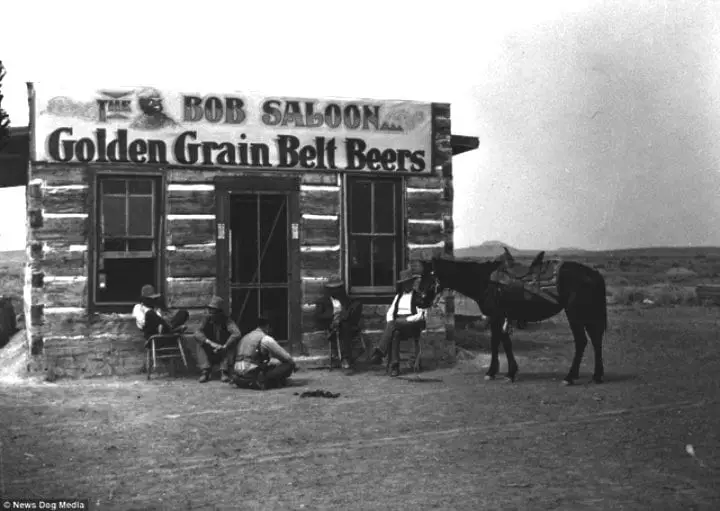
Daily Mail
The old Western saloons offered their clientele various types of entertainment, including dancing girls, card games, dice games and even bowling. Some saloons even had piano players and theatrical skits for their costumers to enjoy.
16. The Cowboy Look
In the wild west, cowboys were so much more than mere animal herders. The term originated from the Spanish Vaquero, a livestock herder riding on horseback, and required skill and plenty of physical ability, developed from an early age.
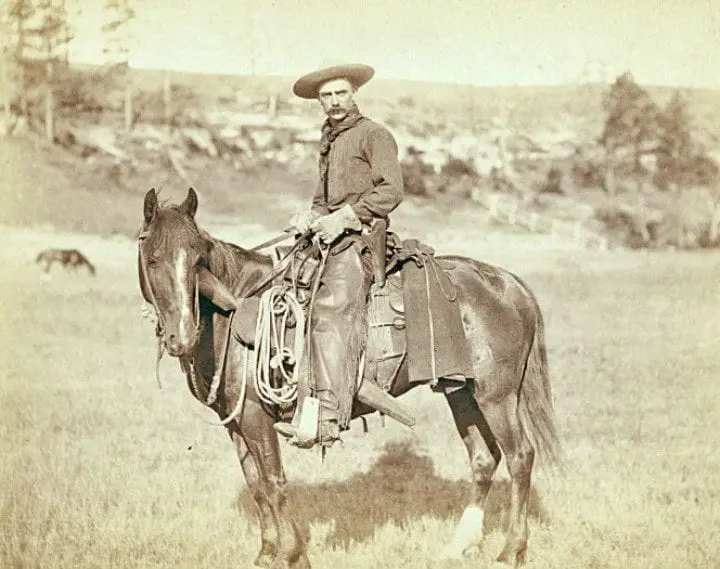
Boredom Therapy
American cowboys were mostly white men, though quite a few African American freedmen, as well as Mexicans and American Indians, also worked as cowboys by the late 1860s. The cowboy look, that has since become iconic, famously included a bandanna, leather gloves, chaps, boots, a sturdy pair of jeans and most importantly, a wide brimmed cowboy hat.
17. Gould and Curry miner
Mining was a huge part of the Wild West – there were plenty of jobs in the field and lots of towns revolved solely around mining! This mine here is a silver mine in Virginia City, Nevada. The city had two major mines: Savage and the Gould and Curry.

Pinterest
The miner here is 900 feet underground, and yet all he has for light is a burning magnesium wire. Can you believe that? Virginia City became a boomtown after the discovery of the silver deposits. At its peak, the city boasted of 25,000 residents. When the mine’s output declined, so did its residents. As of 2010, only around 850 people live in Virginia City. People in the West really were fearless!
18. Two Barmen in an Old West Saloon
We’ve all heard of saloons, right? Back in the old West, saloons were a specific kind of bar that served a wide assortment of folks, including cowboys, fur trappers, soldiers, miners, and many more. The very first saloon ever was established in Wyoming in 1822, but they quickly popped up all around the American Frontier!

Ranker
By 1880, these were one of the more popular establishments available to people in the West. Bartenders prided themselves on the appearance of their saloons, as well as their drink pouring abilities. Many of these saloons were used for gambling, prostitution and opium dens. Cheers!
19. Charging Thunder
Charging Thunder was one of the several Native Americans who participated in Buffalo Bill’s Wild West Show. This Lakota chief joined the crew when he was only 26 years old. Eventually, he married one of the American horse trainers in the crew… ah, stage romance!

Library of Congress
After Buffalo Bill’s show, Charging Thunder became a British citizen and ended up working in Manchester’s Belle Vue Circus as an elephant trainer. He later changed his name to George Edward Williams and found a factory job after the circus.
20. A Mojave Native American
This Mojave Native American’s name was Maiman, and he worked as a guide and interpreter in 19th century Colorado, especially during the 1870s. Maiman would often guide photographer Timothy O’Sullivan around and help him find the best locations for his photographs.
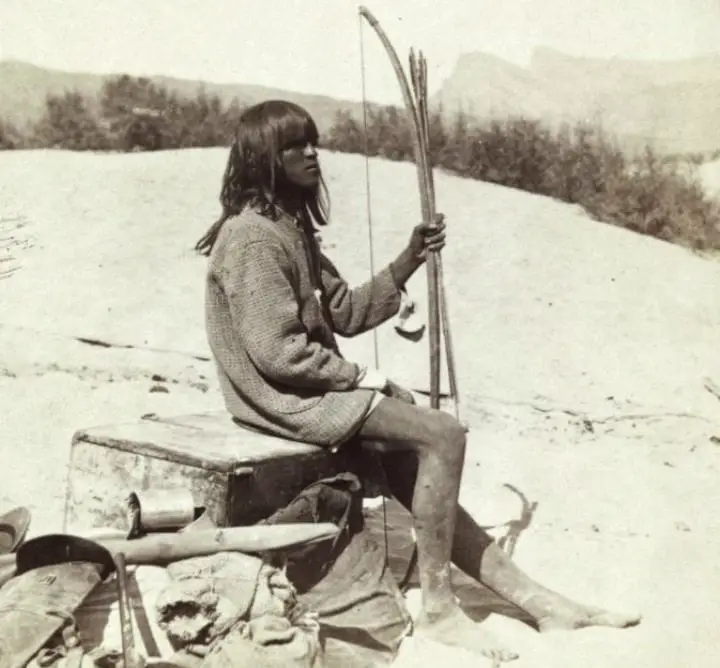
CARI Infonet
O’Sullivan, unlike many other photographers at the time, didn’t like to photograph Native Americans in a studio, which lent his works a very realistic quality which we can see here! He also famously photographed many Civil War battlefields.
21. Billy the Kid, c. 1879
Here’s everyone’s favorite outlaw… Billy the Kid, who was actually born as Henry McCarty, is one of the most well-known outlaws of the Old West. Kid was one of the most notorious gunfighters of the time, and is known for having killed at least 8 men at a very young age.
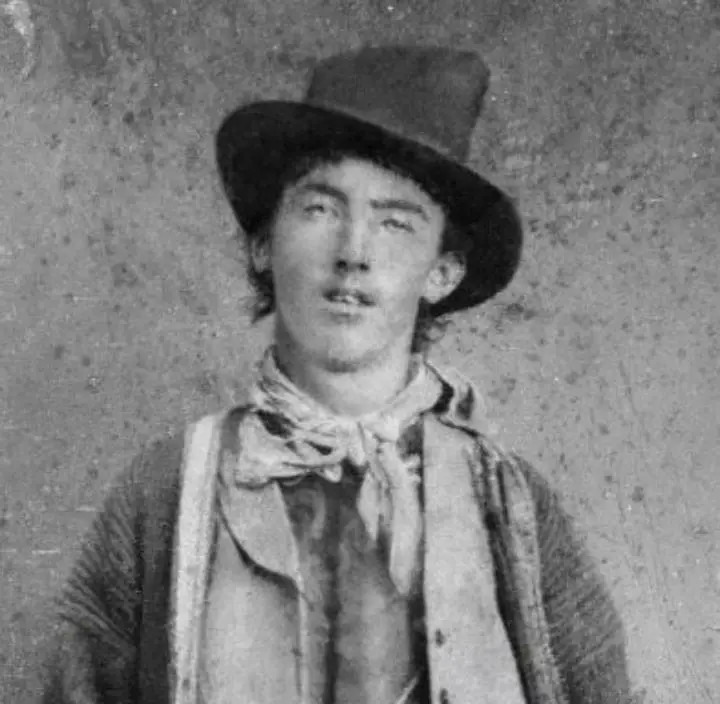
allaboutbillythekid.com
Billy the Kid was born in New York City and later resided mostly in New Mexico, he even fought in their Lincoln County War! Kid was eventually arrested and jailed, then died by gunshot of Sheriff Pat Garrett in an attempt to escape his jail cell. He was only 21! But his legacy didn’t end there. It was rumored that the outlaw didn’t die in the gunfight and over the next few decades numerous people committed crimes while claiming to be Billy the Kid.
22. General Custer Crossing the Dakota Territory
This photograph is of the Dakota Territory, which encompassed what is now North and South Dakota, and features General Custer’s men crossing the plains. General Custer – as you may remember from your history books – was an officer in the United States Army during the American Civil War and the Indian Wars.

Ranker
This photograph is by W.H. Illingworth, another famous photographer on this list, but unlike the rest of them, he’s English! Illingworth once accompanied an expedition to the Montana Territory in the 1860s and 1870s, through the Black Hills of the Dakotas.
23. The Soiled Doves
Plenty of notorious madams and prostitutes were considered fixtures os old Western towns, some were so popular and successful they became millionaires. These women came from all over the world, despite the harsh conditions they had to endure.
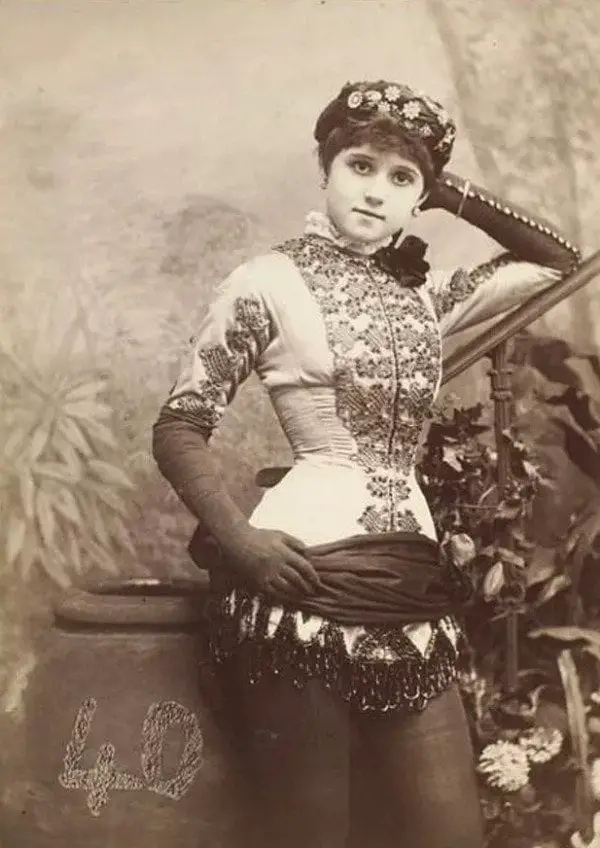
Ranker
These scarlet women had different, surprisingly poetic nicknames, depending on the region. In California, they were labeled “soiled doves” by the cowboys, and “ladies of the line” or “sporting women” by the California ’49er. Other nicknames were “fallen frails,” “doves of the roost,” “nymphs du prairie” and “fallen angles.”
24. Wheeler Survey Group
This incredibly happy looking group of men were the Wheeler Survey group. The Wheeler Survey was a giant expedition to survey the Western United States, led by Captain George Montague Wheeler. The expedition took place from 1869 to 1879 and led to the creation of topographic maps of the Southwest!

Ranker
Three areas of the survey were named after Captain Wheeler: Wheeler Peak in Nevada, Wheeler Peak in New Mexico, and Wheeler Geologic Area in Colorado! That’s not a bad deal!
25. Wyatt Earp, c. 1887
Wyatt Earp was a good friend of Doc Holliday and had some very similar interests. He was also a proficient gambler in the Wild West, but had a working job as a deputy sheriff in Arizona! It seems like everyone at the time had the same job…

YouTube
He gained his notorious reputation during a gunfight at the O.K. Corral in which he killed three cowboys. From then on he was known as a regarded shooter, especially in Tombstone, Arizona! He continuously clashed with cowboys until his death in 1929.
26. Louisa Earp, Morgan Earp’s Wife
We’ve heard plenty about the Earp men so far, but nothing about the woman! They say that behind every great man, there’s a great woman, and that’s certainly true of Morgan Earp. Morgan Earp was married to Louisa Earp, though nobody knows how they met or got married.

Ranker
The two lived in Montana for some time, then moved to California. When Morgan moved to Arizona, he left Louisa behind, expecting it to be a short trip, but the two would never meet again.
27. Navajo Indians Near Fort Defiance
This photograph by Timothy O’Sullivan, entitled “Aboriginal Life Among the Navajo Indians Near Old Fort Defiance, New Mexico” was printed in 1873! The print depicts the Navajoes at their home, an abandoned military post, back in the Old Wild West.

Ranker
The Navajoes themselves are known for being very intelligent and fierce, and are one of the most wealthy aboriginal tribes of the United States. In this photo, you can see the ears of corn that they cultivate and the looms for making blankets.
28. Doc Holliday, all-around man
Doc Holliday is another incredibly well known and dangerous gunfighter of the Wild West. He was a good friend of Wyatt Earp and is well known for being a gambler, a gunfighter, and… a dentist! Say what?

Ranker
Holliday became a dentist when he was 20 years old, then when he was diagnosed with tuberculosis, he became a gambler in Arizona. Why not, right? He couldn’t stay away from the gun, though, and soon earned a reputation for being a deadly gunman.
29. Old Mission Church, New Mexico
Old Mission Church in New Mexico is one of the earliest examples of a Spanish Colonial era mission, as it was established way back in 1630! The mission itself is relatively small, but complex. It’s a long-standing piece of adobe history, and you can still visit it today!

Ranker
The Mission played a big role during the Pueblo Revolt and was inhabited by Franciscans for some time until Mexico gained independence from Spain. Now, it marks a tourist attraction for Zuni Pueblo, New Mexico!
30. Sioux Indian Teepees
The Sioux Nation of Native Americans is one of the largest tribes to have lived on the Great Plains. The Sioux Nation is actually 3 different tribes under the same nation: Eastern Dakota, Western Dakota, and the Lakota tribes. All of these were nomadic tribes that hunted bison, and as a part of their lives on the great plains, they built the teepees that you see here!

Ranker
It’s not known exactly where this photograph was taken, but it’s safe to guess that it’s probably the Dakota Territory. Wherever it was, it’s pretty amazing!
31. Sterling, Goldie Griffith’s son
On May 9, 1913, the tough and rough girl Goldie Griffith got married at Madison Square Garden to fellow Buffalo Bill performer Harry Griffith. The two didn’t always have the best marriage or the best life, but they did give birth to an adorable baby boy, Sterling.

Buffalo Bill Museum & Grave
After her time in the Wild West shows, Goldie Griffith took her son to Nederland, Colorado where she raised him alone in a happy tight-knit family. During their time in Colorado, the family opened a number of restaurants and trained dogs.
32. Timothy O’Sullivan photograph
Timothy O’Sullivan was born on Staten Island, New York, and would go on to become one of the most influential photographers of the Civil War era, though he also garnered a solid reputation for his photography of the American Western landscape. One of his best-known photographs is this one, of Native Americans.

Ranker
O’Sullivan joined a geological survey team in 1871 which allowed him to travel around the United States and take picturesque photographs everywhere that he went, especially in the pueblos of the Canyon de Chelly. There was nobody as talented as him!
This photograph is exactly what you’d expect from the Old West! Keep reading to see even more incredible photographs.
33. Morgan Earp, deputy
Morgan Earp was also friends with Doc Holliday and was Wyatt Earp’s brother! Just like his brother, Morgan Earp often spent his time in Tombstone, Arizona confronting outlaw cowboys. The Earps interfered so much that they all had targets on their heads!

Ranker
Those targets eventually got to Morgan Earp, who was killed by ambush. After his death, Wyatt Earp took matters into his own hands and avenged his brother’s death outside of the law. It’s like a real-life Western movie!
34. Personal hygiene in the Wild West
Don’t you just want to take a dip in these waters too? So refreshing! These waters are a part of the Pagosa Hot Springs in Colorado, which are still around today. It’s amazing to think that people are still doing the same things that those in the 19th century were doing.

Daily Mail
The Pagosa Hot Springs are renowned for their mineral waters, which supposedly could cure any ailments and rejuvenate any person – including this man!
35. Buffalo Soldier, 1890
Nobody is sure who this specific buffalo soldier is, but his face will forever be remembered in history! Buffalo soldiers were the name given to the 10th Cavalry of the United States Army between 1866 and 1951.

historycollection.co
The nickname, Buffalo soldier, was given to black soldiers by the Native Americans when the soldiers fought during the Indian Wars. The name has stuck ever since!
This photograph is an amazing piece of history – click on for even more!
36. The Deadwood Coach
John C.H. Grabill is another well-known photographer from the 19th century! He mostly worked out of the Dakota Territory, though he had a studio in Chicago as well. This photograph of his is of the infamous Deadwood Coach. The Deadwood Coach is perhaps the most historic and well-known stagecoach in existence!

Ranker
This is the stagecoach that was carried by Buffalo Bill in all of his Wild West shows throughout America and Europe. Can you imagine how many wonderful adventures this coach has seen?
37. Ox Teams at Sturgis
This photograph, which is currently located in the Library of Congress, is from the largest surviving collection of John C.H. Grabill’s works. This particular photograph is an image of frontier life in Sturgis, South Dakota. Can you imagine living in a town like this?

Ranker
All of the Dakota Territory was full of prospectors, hunters, and cowboys, many of which used these teams of oxen. Who needs cars when you’ve got a wagon?
38. Cowgirls Assembling at a Watering Hole
Cowgirls… how the west was really won! Rodeo cowgirls, otherwise known as rodeo queens, were a large part of the Old Wild West. Many people nowadays think of cowgirls as these cute women in cowboy boots and fringe, but that is certainly not the case!

Ranker
Cowboys rode broncos, shot guns, and sometimes even performed. Some of the most famous cowgirls of the time were Annie Oakley, Calamity Jane, and Dale Evans.
39. The Palisades
Alfred A. Hart was an American photographer that actually was named the only official photographer of the Western half of the transcontinental railroad in the 1860s! That sounds like a pretty impressive title, don’t you think?

Ranker
This particular photo was taken of the Palisades, which is a line of cliffs on the Western side of the Hudson River in New York. The Palisades are renown for their beauty and their picturesque place on the New York skyline.
40. Wagon Trail
This photograph is an interesting one… The wagon shown in this picture is actually Timothy O’Sullivan’s darkroom wagon! All of the photographs that we’ve seen here would have been developed in this very wagon below. The footprints at the foreground of the photo are O’Sullivan’s, showing where he walked out to snap the pic!

Daily Mail
This photograph was taken in Carson Sink, Nevada, where, as you can see, sand dunes stretch for miles at a time.
41. Colorado River’s Black Canyon
The Black Canyon of the Colorado is one of the most famous landmarks of Nevada and Arizona’s beautiful landscape. The Canyon is located on the Colorado River where the Hoover Dam would eventually be built. Isn’t it absolutely gorgeous?

Ranker
The Canyon is surrounded by mountains, specifically the El Dorado Mountains and Black Mountains of Arizona. The Canyon is full of hot springs and makes for beautiful landscape photography! Don’t you just want to take a swim?
This river is so gorgeous! Keep reading to see even more beautiful landmarks:
42. Big Cottonwood Canyon, Utah
Big Cottonwood Canyon is located in Salt Lake City, Utah, and is an extremely popular destination for hiking, rock-climbing, and camping. It’s also a great place to go fishing! This was true of the canyon in the 19th century and still holds true today.

Ranker
The canyon is one of the most bio-diverse places in the U.S. today and houses many different species of plants and animals. If you ever wanted to do nature research, this would be the place!
43. Johnny Ringo, outlaw
Johnny Ringo was one of the most famed members of the group of outlaws, the Cochise County Cowboys. These Cowboys were the menace of Tombstone, Arizona for quite some time! We’re starting to understand how Tombstone got its name…

Ranker
Johnny Ringo is one of the men that was involved in the shooting of Wyatt Earp and Doc Holliday – yikes!
44. Villa of Brule
Another one of John C.H. Grabill’s wonderful works, this photograph demonstrates the Villa of Brule near Pine Ridge, South Dakota. A great Indian camp lies on this villa, and in the photograph, you can see some of this! How many teepees can you count?

Ranker
A Lakota teepee camp is in the background, and White Clay Creek is in the foreground of this photograph. The photograph was taken in 1891!
This looks like it came straight out of a picture book! Click next to see even more:
45. Chinese Railroad Workers
Chinese Railroad workers were a huge part of the construction of the Transcontinental Railroad, and have a long and complicated history with the foundation of the West. Without these workers, the railroad would have never been built!

Ranker
However, there were financial problems – and a whole myriad of labor problems – that occurred during construction. Companies refused to provide Chinese workers with room and board and were severely overworked. They were also paid significantly less than white workers.
46. Browns Park, Colorado
Browns Park, located on the Utah-Colorado border, was originally called Brown’s Hole. Do you see it? The Park is an isolated mountain valley that contains Flaming Gorge Dam and ends at Dinosaur National Monument. That sounds pretty cool to us!

Ranker
Historically, Browns Park has been a haven for outlaws like Butch Cassidy and Tom Horn. It was also where Ann Bassett was born. Amazing!
47. Gold Hill, Nevada
Gold Hill, Nevada is located just south of Virginia City and became famous for its mining of the Comstock Lode. It was a mining city that once was very prosperous, though it now only has about 191 inhabitants. If it gets any smaller, it’ll become a ghost town!

Ranker
Gold Hill houses its historic Hotel, which is Nevada’s oldest hotel and the former Bank of California building, among several other historic places. Wonder if it’s haunted?
48. Gambling Hall Poker Game
Gambling was a big deal in the Old Wild West, especially in the 19th century. Some of the first structures built in the west were gambling halls! These were places where the 3 W’s happened: wagering, whoring, and whiskey-drinking. What better past-times could you possibly ask for?

Ranker
Gambling was an incredibly popular sport during this time, and was even considered to be a profession by many – though it could often lead to trouble, so watch your chips!
49. Pyramid Lake, Nevada
Pyramid Lake is the naturally occurring sink of the Truckee River Basin in Reno, Nevada near Lake Tahoe. The lake is super salty, as the only way for water to leave is through evaporation! We wouldn’t want to take a dip there… though the lake is interesting for other reasons!

Ranker
Several big battles of the Paiute War were fought near this lake, and the area has been fought over deeply due to its abundant amount of fish. Guess they like the salty water!
50. Timothy O’Sullivan
We’ve seen plenty of Timothy O’Sullivan photographs on here so far, but none of the man himself! We wonder who took his photograph? O’Sullivan actually became a Civil War photographer after fighting in the war himself. He wanted to document the horrors of war and share them with the world!

Daily Mail
After the Civil War ended, O’Sullivan set out to explore the Western landscape and embarked on a long cross-continental expedition. It’s the reason we’ve seen so many of his photographs!
51. Whirling Horse
Whirling Horse was another member of Buffalo Bill’s Wild West Show. Native Americans on the show were known as “show Indians,” though they all came from various Native American tribes. They would reenact historic battles and perform their native dances for audiences. Sounds like a fun show!

Library of Congress
The Native American members of the group would also perform shows portraying aspects of their culture, they even had some shows portraying themselves as victims of western expansion, being forcibly removed from their homelands. In many ways, the Wild West Show helped cool tensions and public opinion towards the end of the American-Indian Wars after years of US propaganda against Native Americans. After participating in the Wild West Show, many of these Native Americans would go on to become silent film stars, playing similar roles.
52. Canyon de Chelly, Arizona
Timothy O’Sullivan is one of the best-known photographers of the 19th century, and is widely known for his work during the American Civil War, though he also photographed around the Western U.S. for a beautiful collection of photography!

Ranker
This photograph is of the Canyon de Chelly in Arizona, which is one of America’s national monuments on the boundaries of the Navajo Nation. Historically, these canyons have housed the Pueblo people. What a gorgeous place to live!
53. The Bath House
Hot Springs, Arkansas is now a relaxing weekend getaway, but at one point in history, it was famous for its supposed medicinal properties. The place was legendary amongst Native American tribes! Have lots of cramps? Go to the springs. Is your body sore? Go to the springs!

Ranker
Nowadays, people still visit for the hot springs there, but it also houses the oldest federal reserve in the United States. What an interesting combination!
Don’t you want to visit? Keep reading for more!
54. Shoshone Falls, Idaho
Another beautiful Timothy O’Sullivan photograph, this landscape of the Shoshone Falls depicts the gorgeous falls located in Snake River, Idaho. The falls are actually a giant waterfall and are often called the “Niagara of the West” – though it’s actually taller than Niagara Falls! Can you imagine that?

Ranker
Its location was an important fishing and trading location for Native Americans in the 19th century, though it shortly became a tourist destination. We can see why!
55. Apache Spirit Dancers
The Apache consist of several Native American tribes originating in the Southwestern United States. The Apache tribes had to adapt to their own territories and live off the land, relying on scarce food sources and harsh climate in those areas.
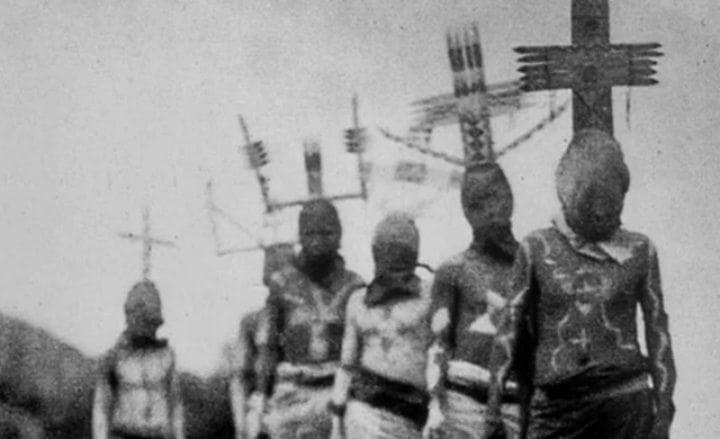
Ranker
According to common Apache belief, their ancestors used to live alongside supernatural beings. These supernatual beings are believed to be living in underground realms as well as the mountains around them. The Apache spirit dancers, pictured above, hold the ability to summon the spirit of those beings, and also to protect the Apache people.
56. The Masked Robber
William Whitney Brazelton, AKA Bill Brazen, was a known stage robber and an overall outlaw during the second half of the 1800s. Though little is known about Brazen, it is said that he originally hailed from San Francisco, and that he claimed his first victim at the early age of fifteen.
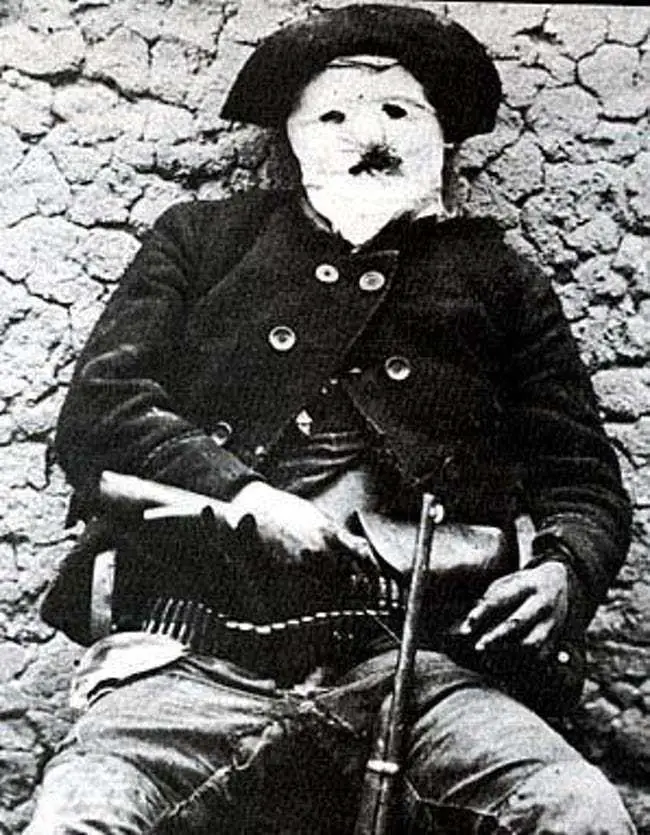
pinterest
The above photo shows Brazen wearing his signature face mask, used to hide his identity from his robbery victims. The photo was taken post mortem, after Brazen was shot to death by a five-man posse led by Sheriff Charles A. Shibell in 1878.
57. Enjoying a Brew
Respectable women weren’t welcome to saloons back in the Wild West, meaning they had a hard time getting their share of hard liquor or beer. Up until World War I, unless they were saloon girls, prostitutes or dancers, women were barred from entry in most saloons.
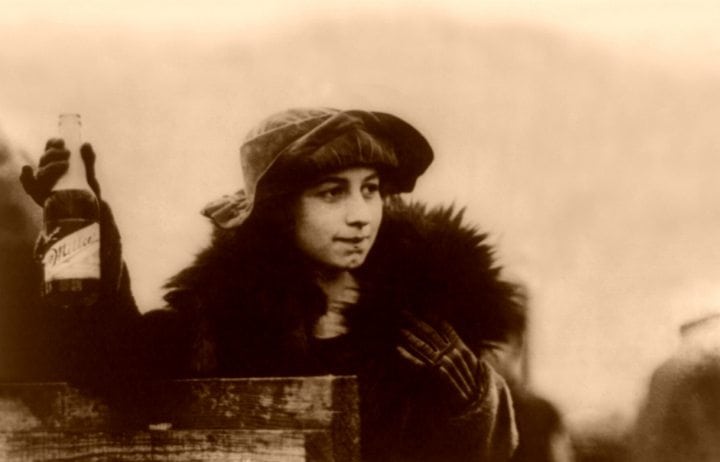
legendsofamerica.com
The saloons that did cater to women did so mostly through the back door. A few decades later, in 1893, it was respectable women like those who were denied service that helped found the Anti-Saloon league, the most powerful prohibition lobby in America.
58. Fortune Tellers
In the old west, fortune telling was a popular pastime. Predicting one’s future was mostly associated with Gypsies, or Romani people. The biggest Romani immigration wave to North America began in the late 19th century, though Romani slaves were shipped to America as early as 1492.
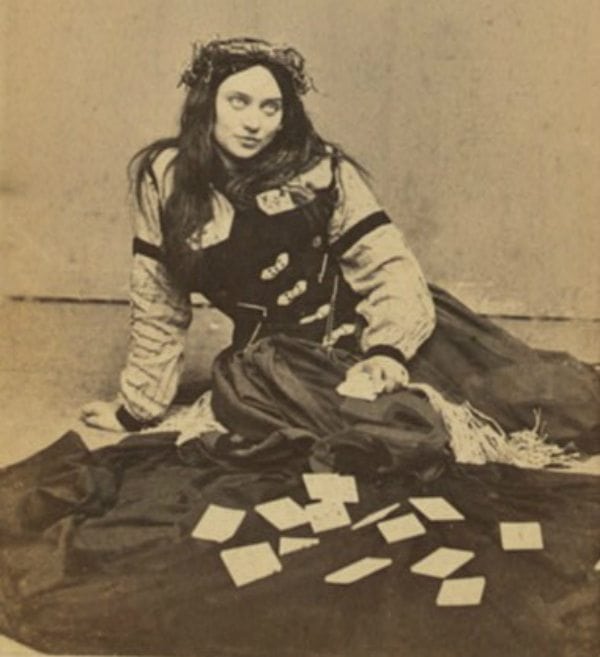
vintag.es
Common fortune telling methods used by the Romani were Tarot card reading, palm reading and crystallomancy, in which a crystal sphere is used to predict one’s future. There was also use of automated fortune telling machines in the old west, some can still be found today.
59. Jackpot Poker
In the western saloon, games of chance were a popular form of entertainment. Poker was a crowd favorite, as well as Faro, three-card monte and several types of dice games. Later on, games like billiard and bowling were also introduced.
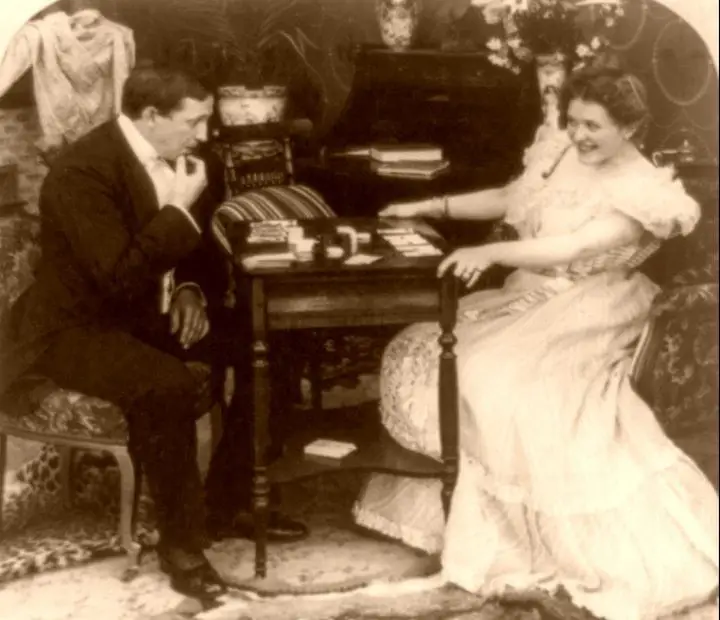
legendsofamerica.com
Poker was originally developed in the United States during the early 19th century, and was documented as early as 1836, in a book named “Dragoon Campaigns to the Rocky Mountains” by James Hildreth. According to gaming historians, its source is either the Persian game of As-Nas, or a French game named Poque.
60. Pearl Hart
Pearl Hart was another notable Wild West figure. Known for her stagecoach robberies and gutsy escape from prison, Hart reached celebrity status during her lifetime. After robbing a stagecoach in Arizona, Hart was locked in an all-male prison and used that fact, as well as the admiring guards, to her advantage.
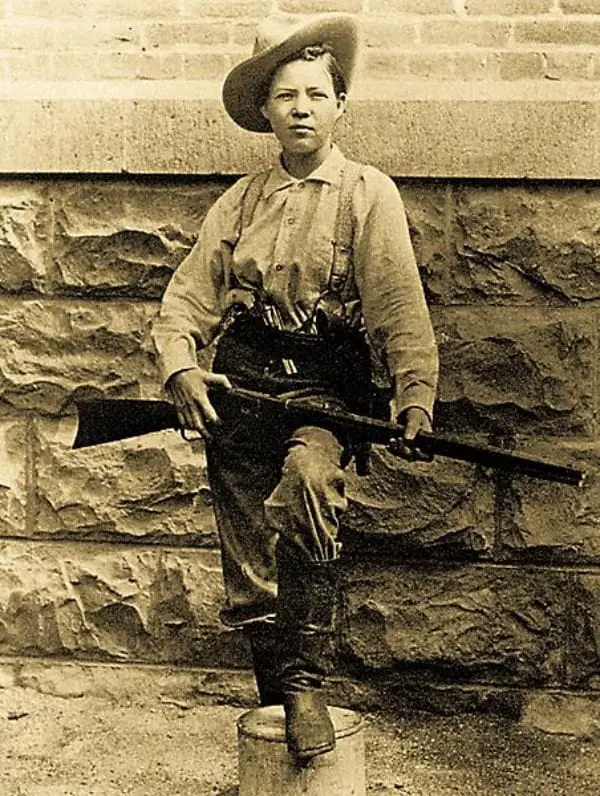
americancowboy.com
The skillful Hart wasn’t always involved in serious crime. Well educated and from a wealthy family, Hart eloped and had two children when she was very young. After suffering physical abuse from her husband, she left him several times and eventually broke free and moved to Phoenix. According to several sources, she later turned to stagecoach robbery to earn money for her ill mother.
61. Hiding in Plain Sight
Even though prostitution was mostly illegal in the Wild West, brothels were common and in plain sight. Some madams were even considered respectable citizens and donated much of their profits back to society. However, the majority of prostitutes were very young and largely illiterate.
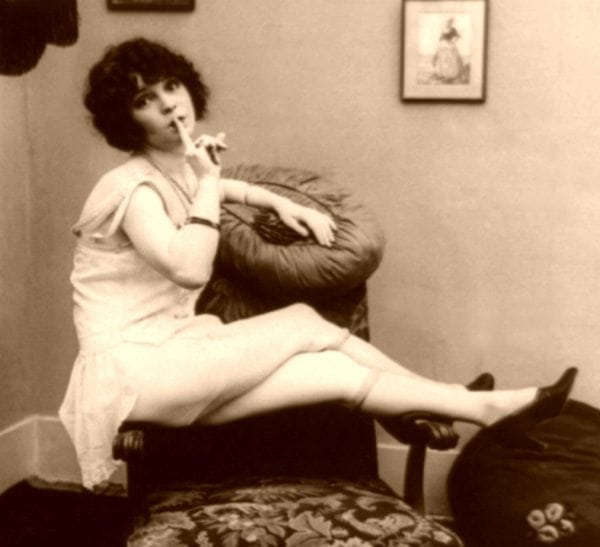
photos.legendsofamerica.com
Working in the goldmines could get quite cold and lonely. That’s when scarlet women and madams came along, offering “comfort” and “companionship” to the miners. After a while, if business was good, a whole red light district would come to be.
62. Queen of the Red Light District
Pictured below is Josephine “Chicago Joe” Airey, famous prostitute and businessowner from Helena, Montana. On top of being a successful madam, Airey owned brothels, a theater, dance halls and saloons as well as plenty of land. After several successful business ventures, Airey became the most influential landowner in her town.
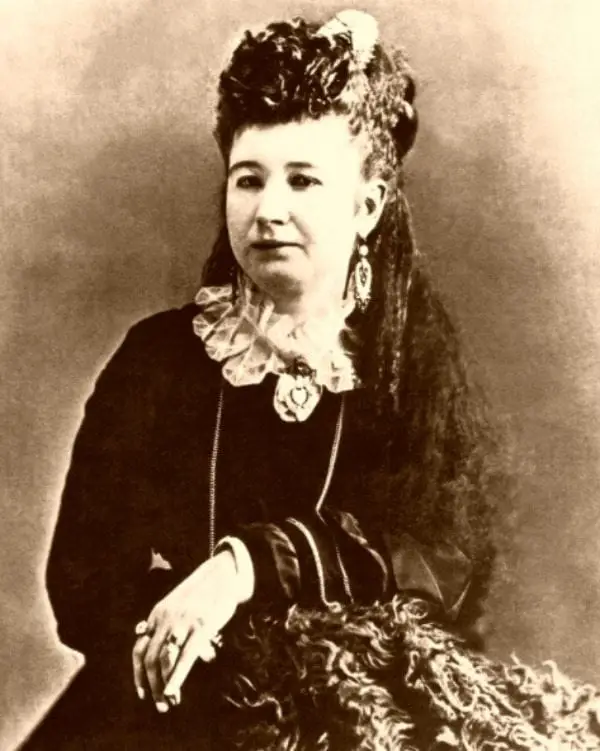
legensofamerica.com
Known for their lavish parties, Airey and her husband were famous among Helena citizens. They didn’t shy from controversy however–In 1883, Airey posted a notice in the local newspaper ordering the saloons and gambling houses in the area not to cater to her husband or to let him gamble.
63. Rotgut
Liquor isn’t cheap, nor was it cheap back in the days of the Wild West. To generate more profit, saloon owners would dilute their good liquor by adding other ingredients to it, such as turpentine and ammonia. Some of these concoctions had rather intimidating names, like Tarantula Juice and Coffin Varnish.
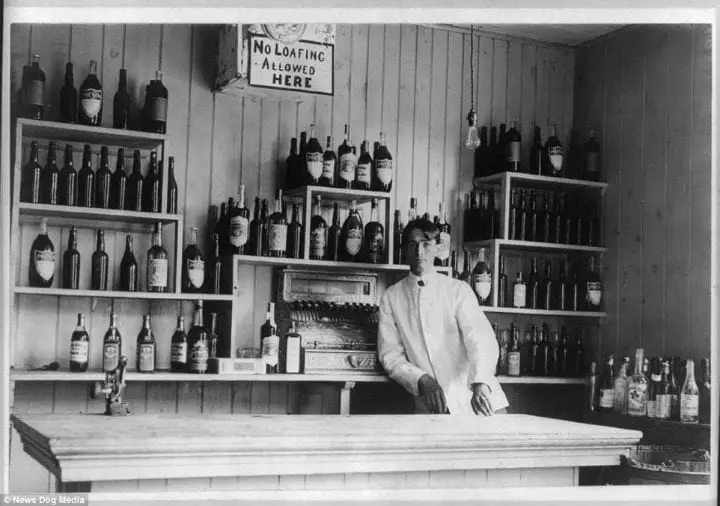
dailymail.co.uk
Besides hard liquor, popular alchoholic drinks in the Old West included the Allston cocktail, made with gin, peppermint schnapps, and lemon juice, and a classic mix of brandy and soda called B&S. Wine and champagne were also favorites among saloon patrons.
64. Bullet Dance With Me
The below photo shows several men firing their guns at another man’s feet in an unknown old-western saloon, possibly in Wyoming. The poor man’s only choice to avoid the bullets is to jump as fast as he can, in what is called a “bullet dance.”
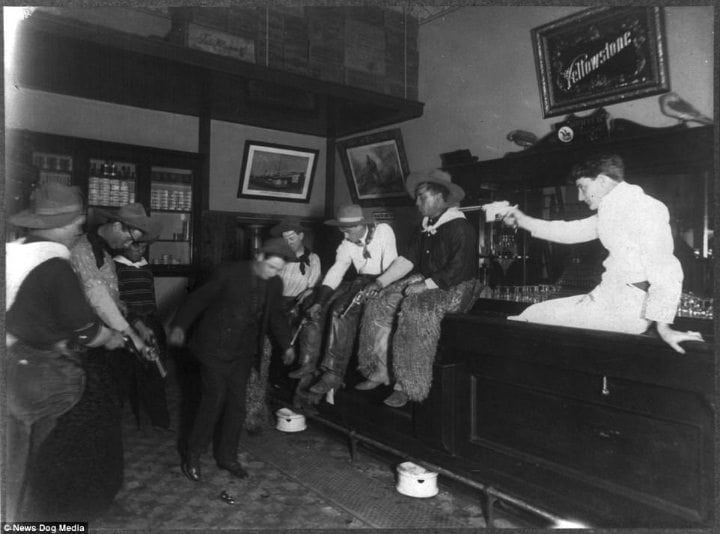
dailymail.co.uk
The bartender, however, doesn’t seem very impressed with the unlucky man’s dancing skills as he is aiming his gun directly at his head. As this photo shows, it wasn’t all fun and games for everyone at the saloon.
65. Rufus Buck Gang
This group of rugged looking young men was known as the Rufus Buck Gang back in the days of the Wild West. Formed by a man named Rufus Buck, this multi-racial gang of outlaws robbed stores and ranches in the Arkansas-Oklahoma area in the lates 1890s.
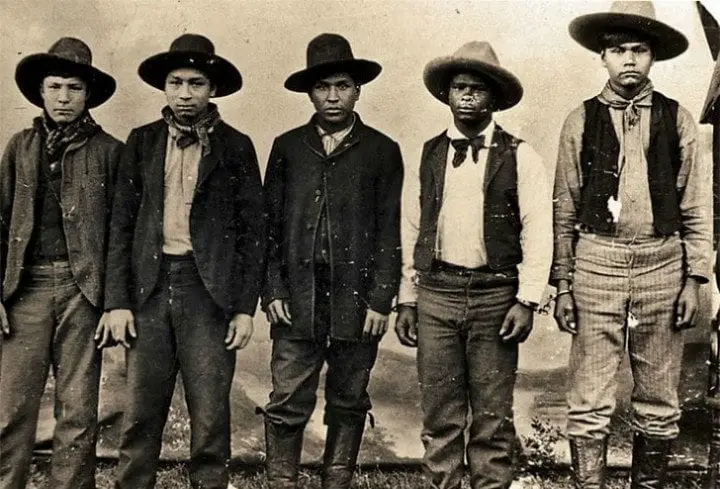
headlineleak.com
The gang killed several men, including a U.S. deputy marshal named John Garrett, and were responsible for a number of heinous crimes. They were eventually captured outside Muskogee, OK, recieved a death sentence, and were hanged in 1896.
66. A Girl of the Streets
The novella “Maggie: A Girl of the Streets” was written by Stephen Crane in 1893. The plot centers around a young girl from Bowery, whose life take on an unfortunate turn. After being seduced by a friend of her brother’s, Maggie’s life eventually comes to a tragic end.
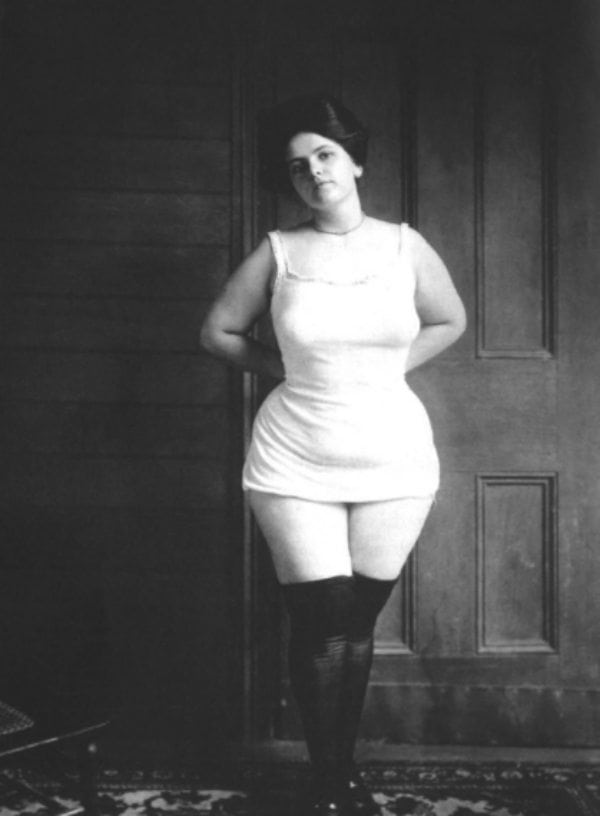
legendsofamerica.com
Maggie and her brother were raised in poverty by drunk and violent parents. She tries to improve her life, but her mother’s drunken rages undermine her efforts. After being rejected by her family and friends, Maggie is eventually implied to have become a prostitute. Soon after that, she dies. The story was considered risqué at the time, and was followed by a second novel, “George’s Mother,” by the same author.
SHARE this article if you loved seeing all of these historic photos of the wild west!
Source: Ranker